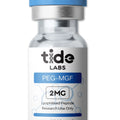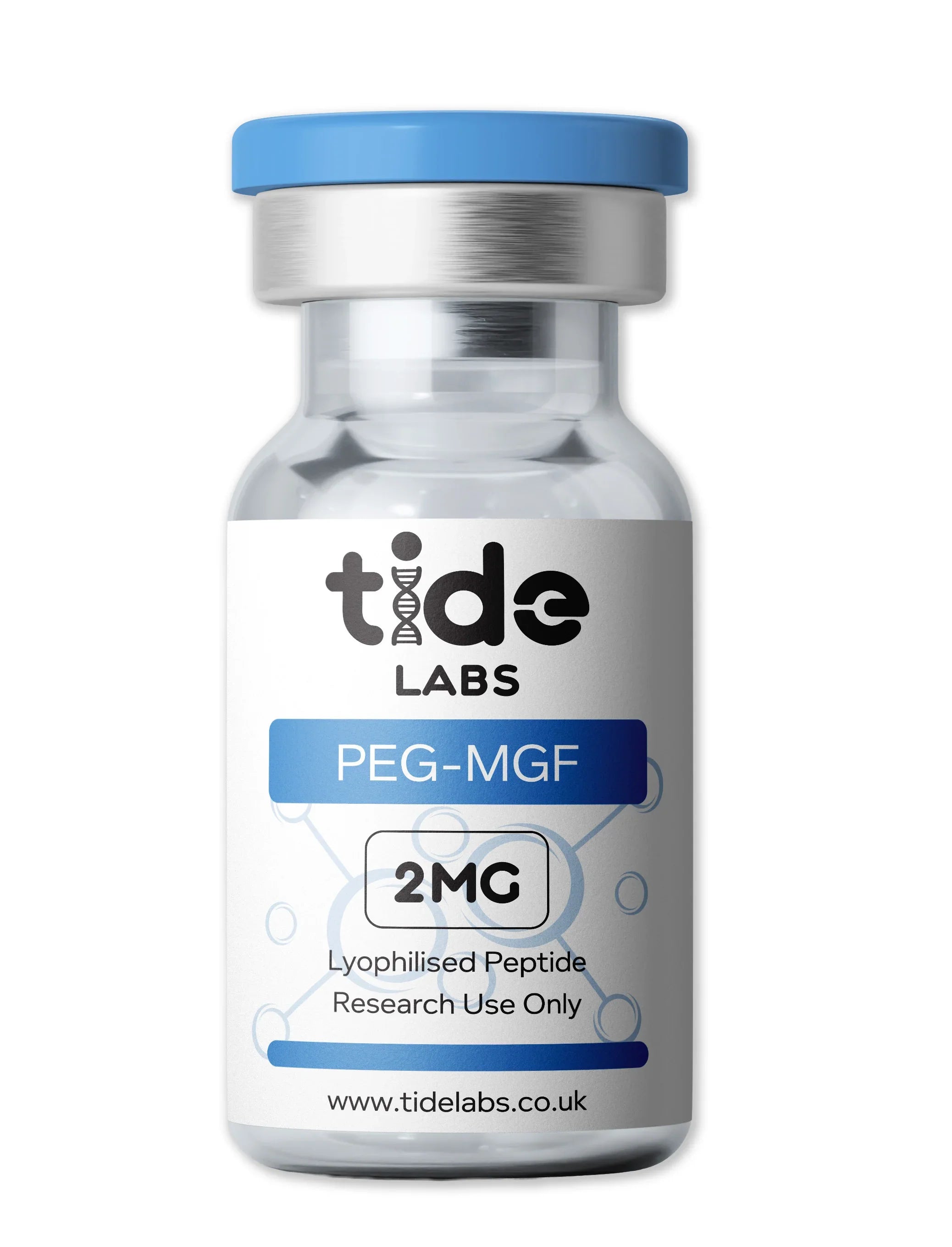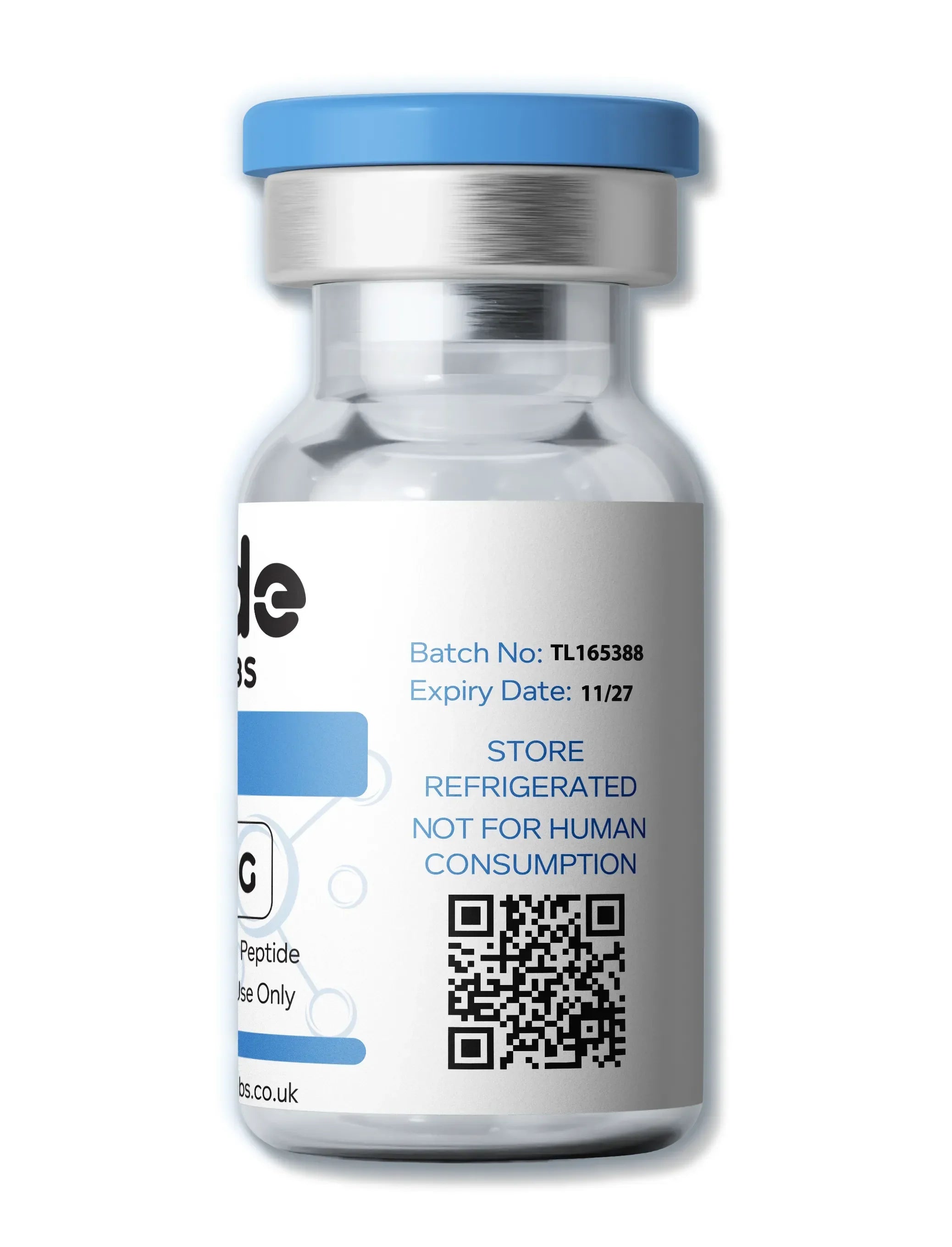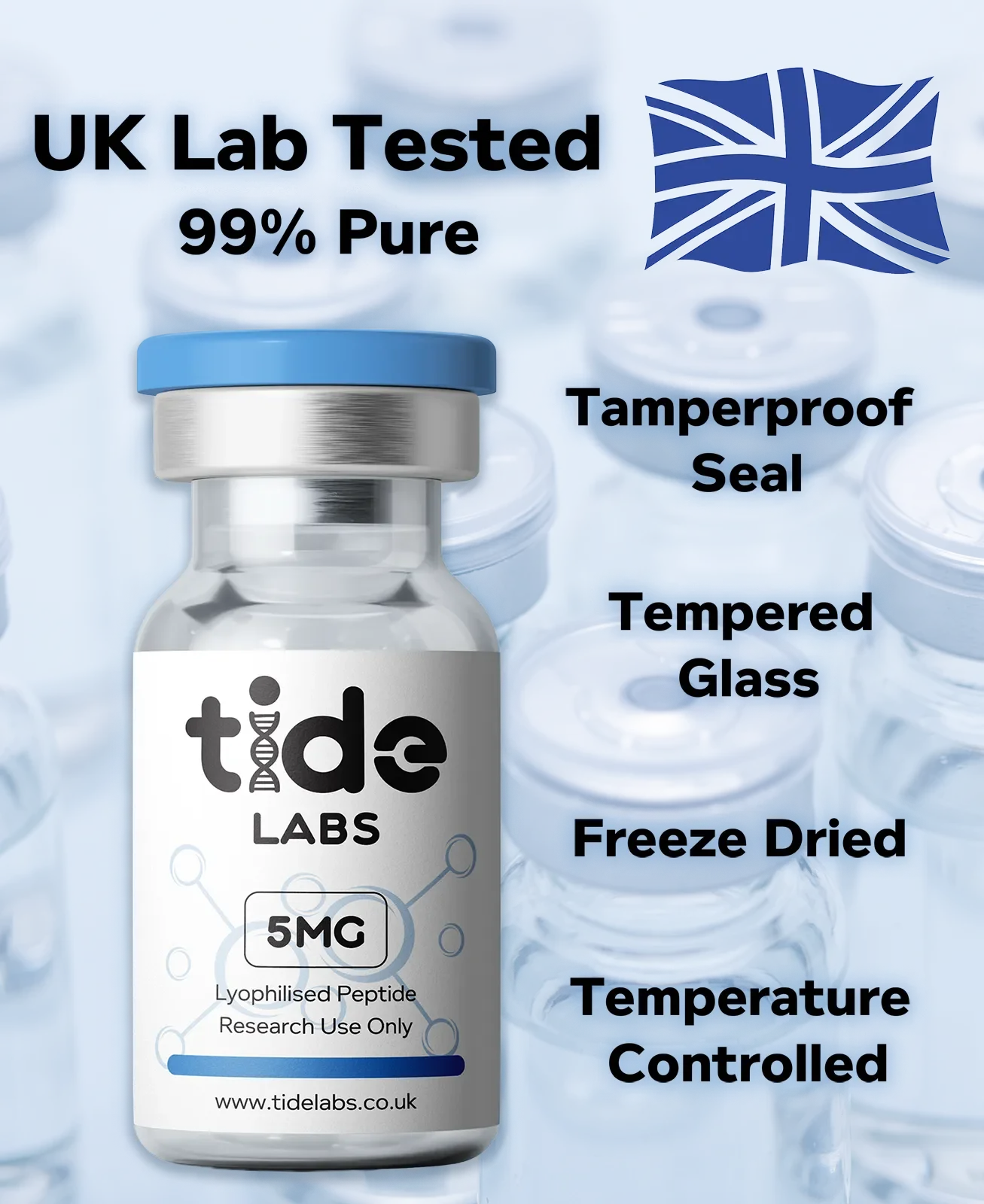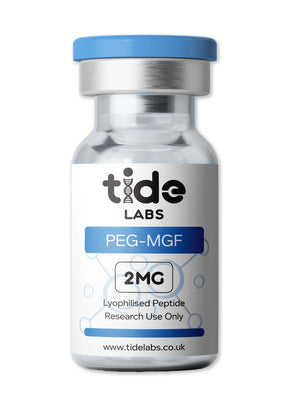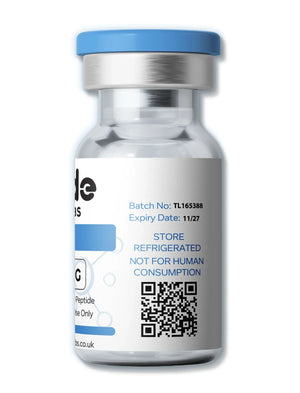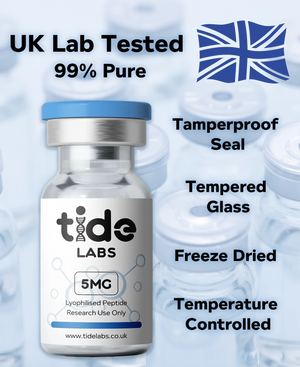PEG-MGF
PEG-MGF (Pegylated Mechano Growth Factor) is a synthetic, pegylated variant of Mechano Growth Factor, itself an isoform of Insulin-like Growth Factor-1 (IGF-1). The pegylation process is designed to extend the peptide’s stability and half-life in research environments, making it an attractive subject for laboratory investigation. PEG-MGF has gained significant attention in preclinical studies focused on muscle growth, repair, and regeneration.
Area of Interest
Research into PEG-MGF has highlighted several promising areas:
- Muscle Repair: Explored for its role in stimulating satellite cell activation and muscle fiber regeneration following injury.
- Hypertrophy Studies: Studied in preclinical models for its influence on muscle mass and protein synthesis.
- Longevity of Action: The pegylation modification allows for extended half-life compared to regular MGF, making it of particular interest in long-term dosing models.
- Cellular Growth Pathways: Investigated as part of IGF-1 related signaling pathways involved in tissue repair and growth.
Together, these research areas underscore PEG-MGF as a peptide of high interest, particularly in the field of muscle biology and recovery research.
Technical Information
- Chemical Name: Pegylated Mechano Growth Factor
- Synonyms: PEG-MGF, Pegylated IGF-1 Ec isoform
- Molecular Formula: Variable due to pegylation (core MGF sequence plus PEG chain)
- Molecular Weight: ~2867 g/mol (unmodified MGF, higher with PEG modification)
- Sequence (Amino Acid): Derived from IGF-1 Ec splice variant; sequence varies slightly depending on manufacturer
- CAS Number: Not consistently assigned (research peptide)
- Peptide Classification: Synthetic peptide, pegylated for stability
Storage Guidelines
- Lyophilized peptide is stable at room temperature for short periods.
- For long-term storage, keep at −20 °C or below.
- Once reconstituted, store at 2–8 °C. Effective use period may vary depending on the solution used.
Solubility
PEG-MGF is soluble in sterile water or other aqueous buffers depending on formulation and purity.
References
- Goldspink, G. (2005). “Gene expression in muscle in response to exercise.” Journal of Muscle Research and Cell Motility, 26(2-3), 121–126. https://doi.org/10.1007/s10974-005-9010-0
- Yang, S. Y., Goldspink, G. (2002). “Different roles of the IGF-I Ec peptide (MGF) and mature IGF-I in myoblast proliferation and differentiation.” FEBS Letters, 522(1-3), 156–160. https://doi.org/10.1016/S0014-5793(02)02918-6
Certificate of Analysis (COA): Available here
